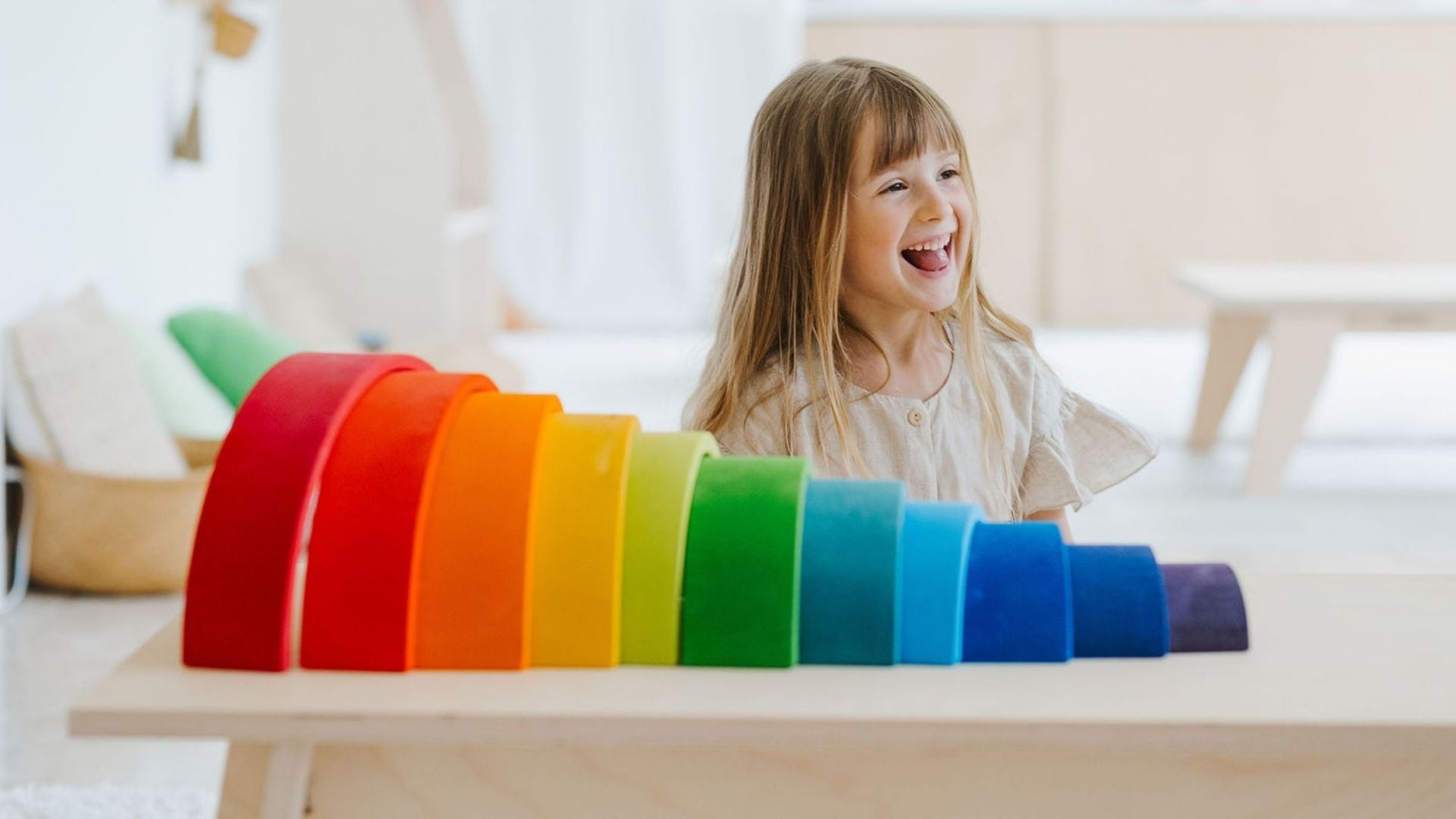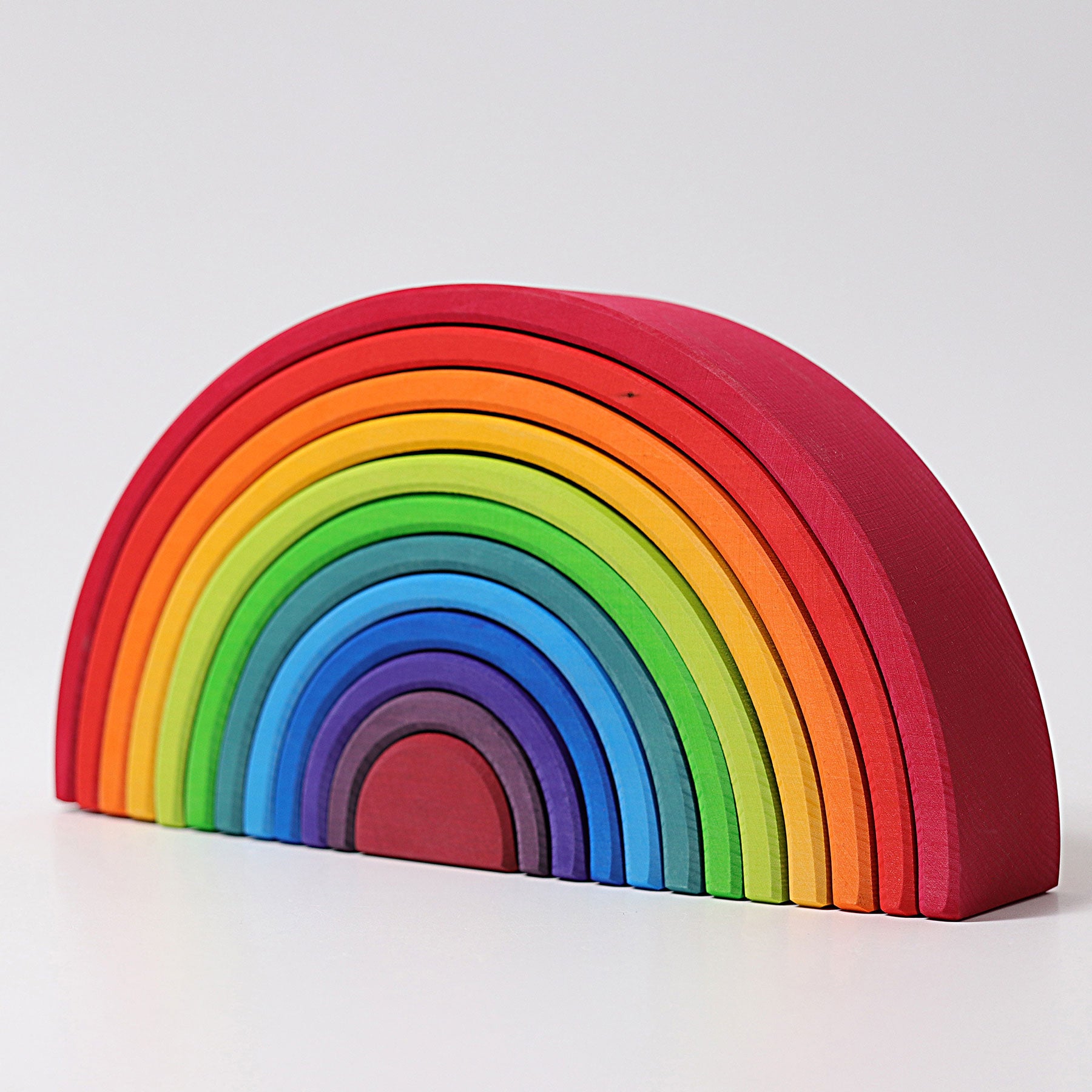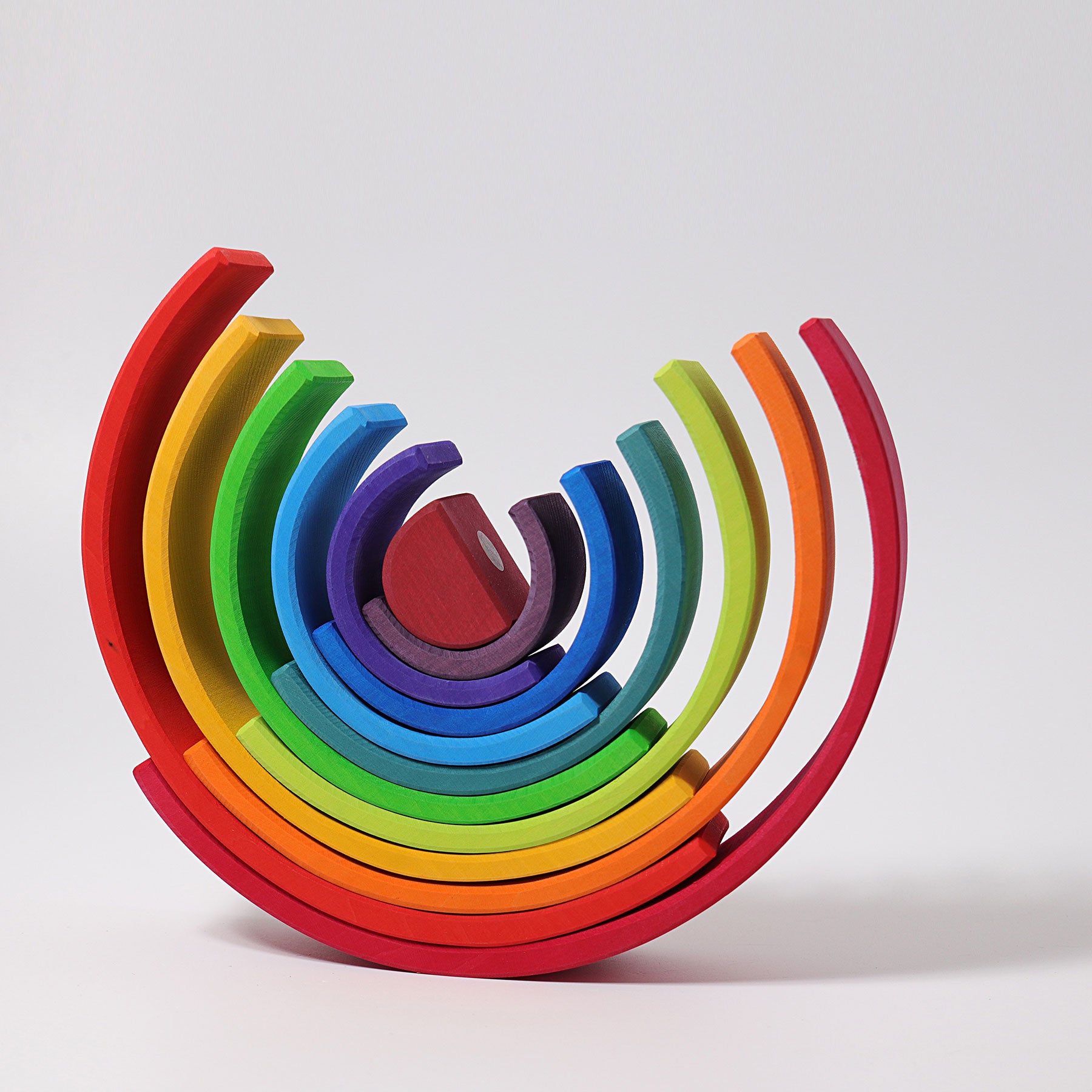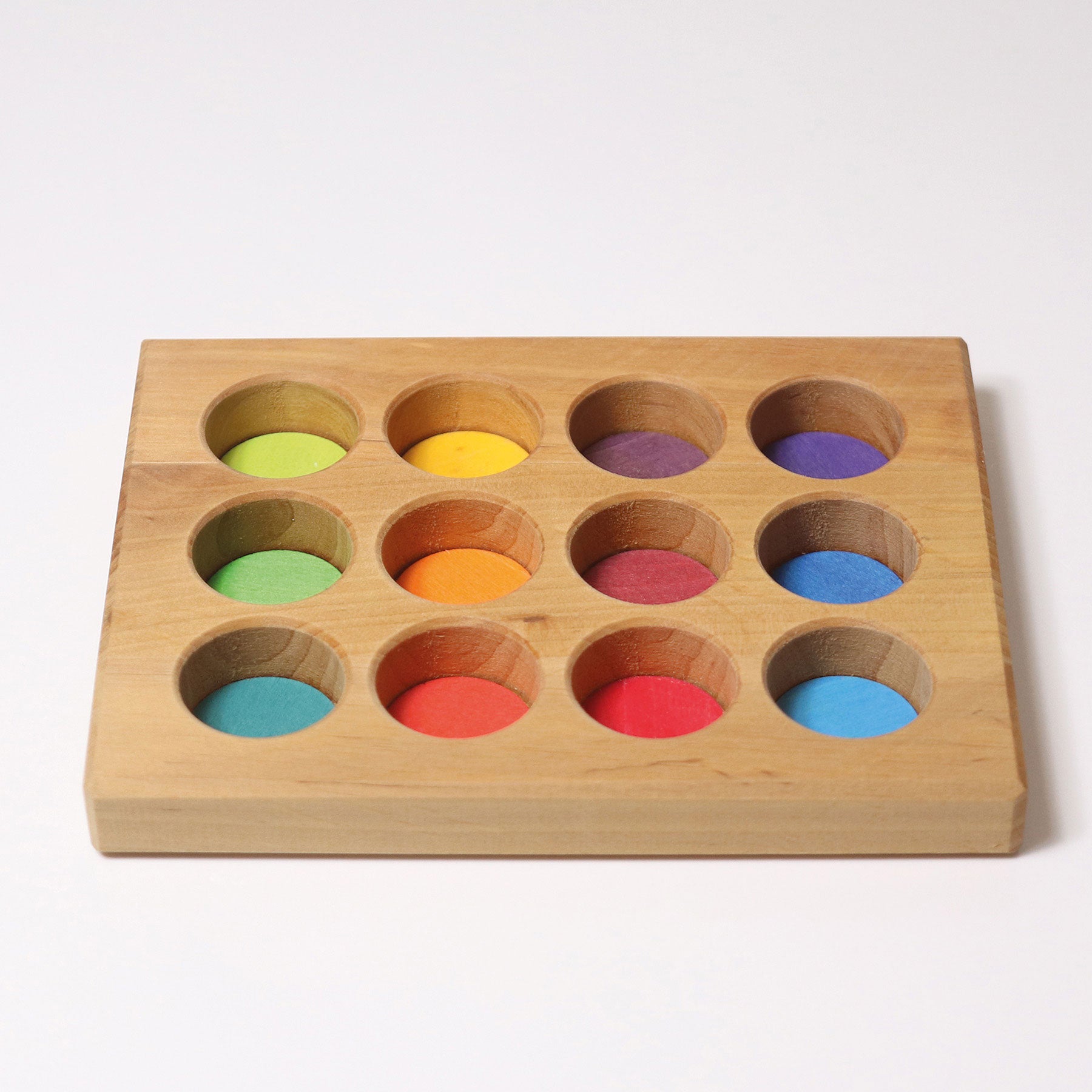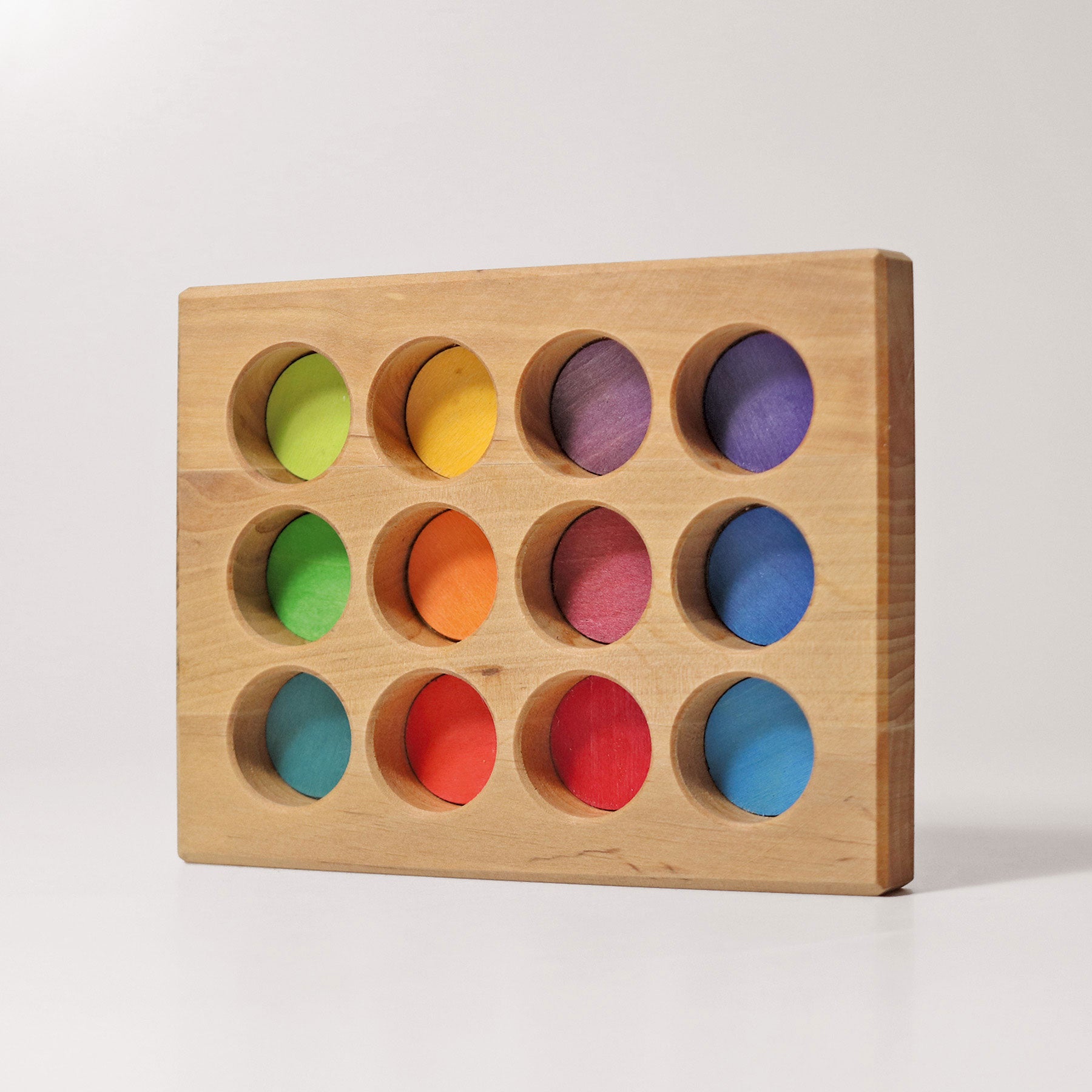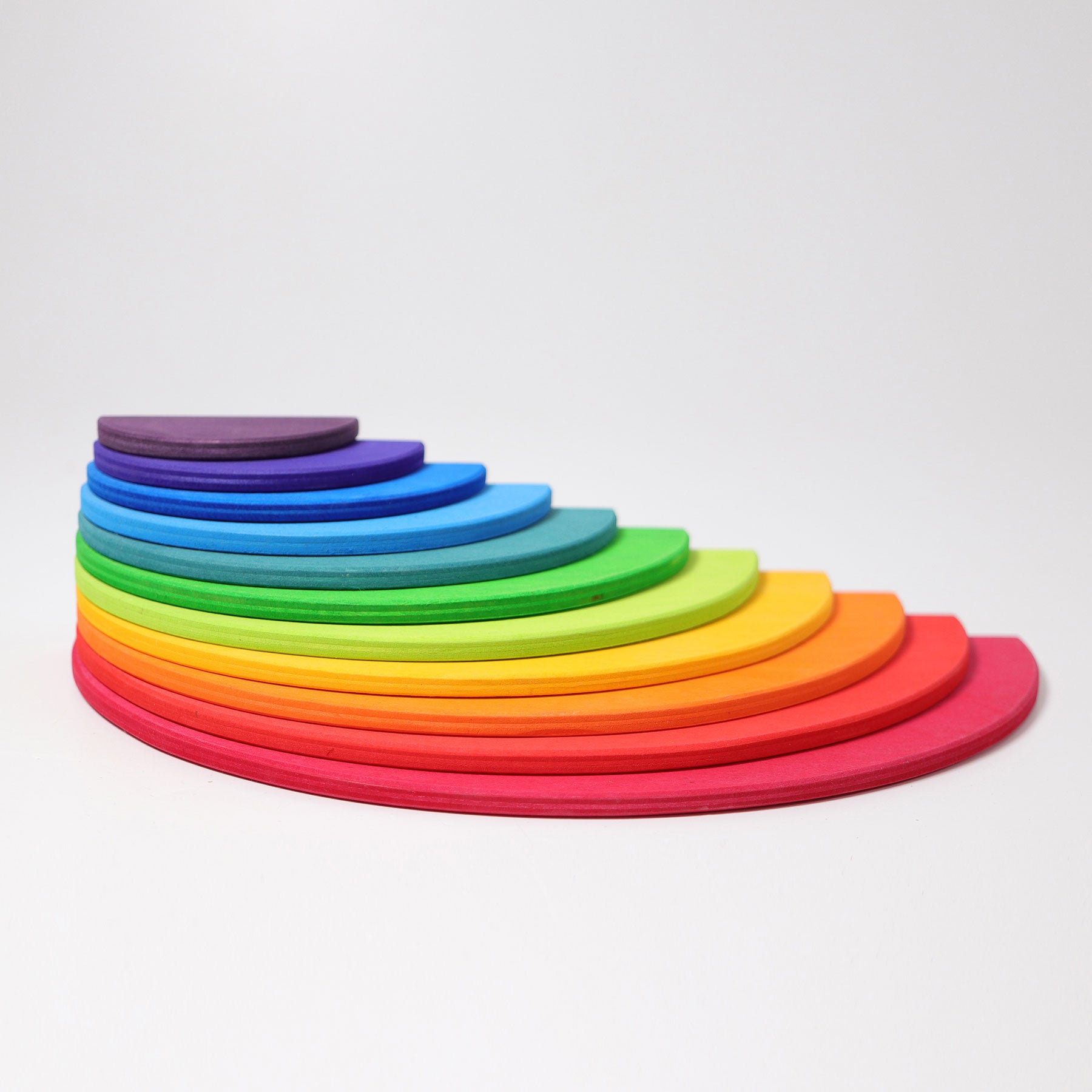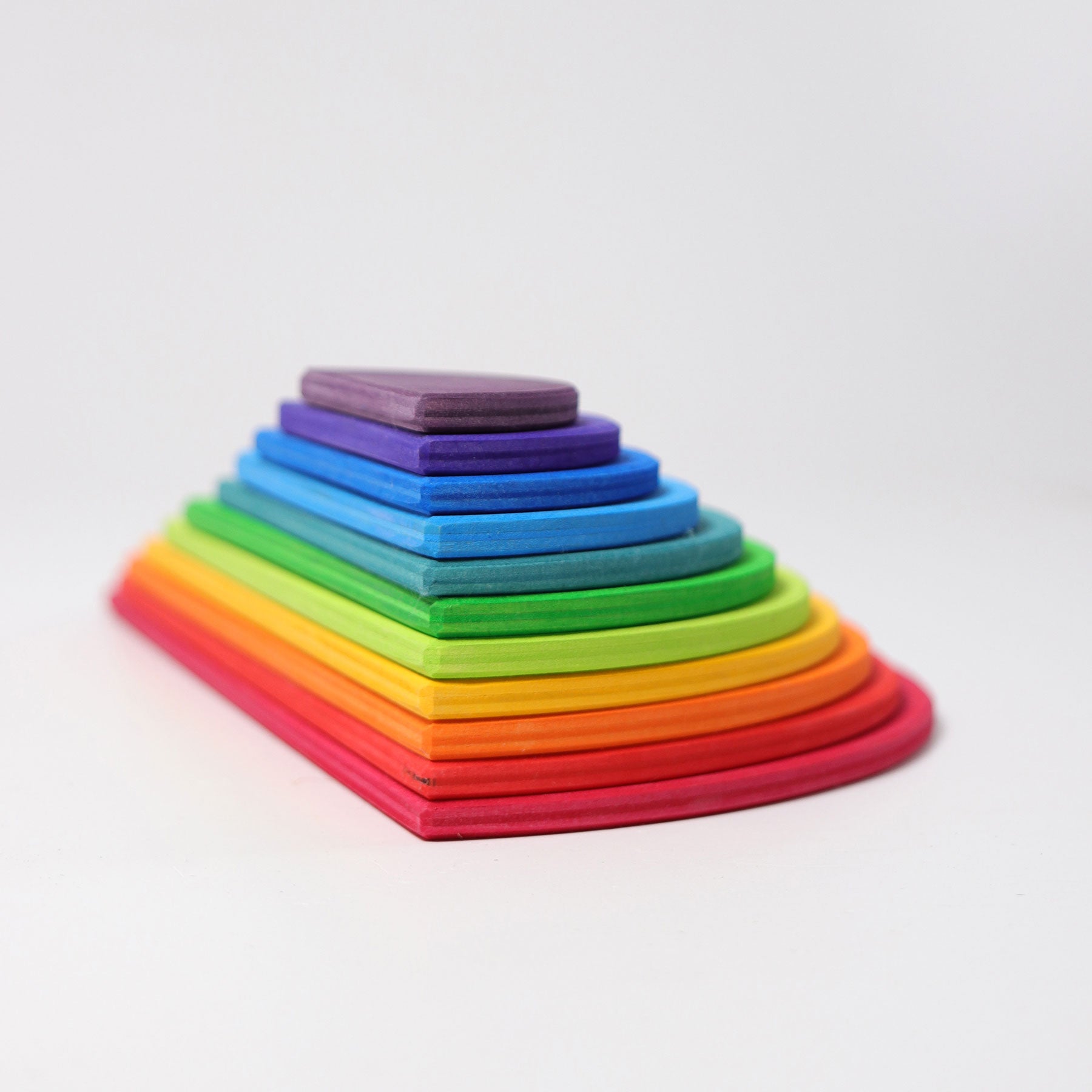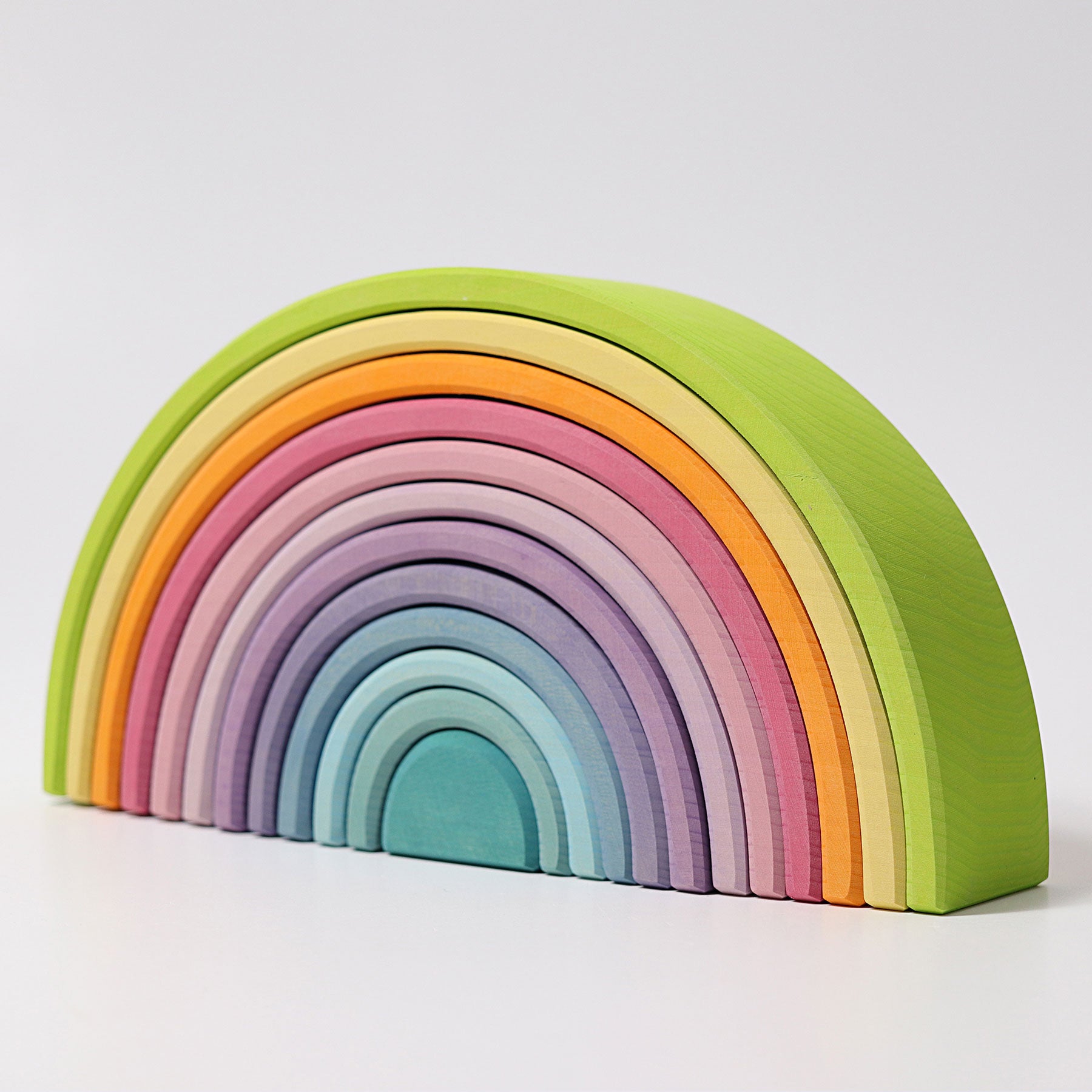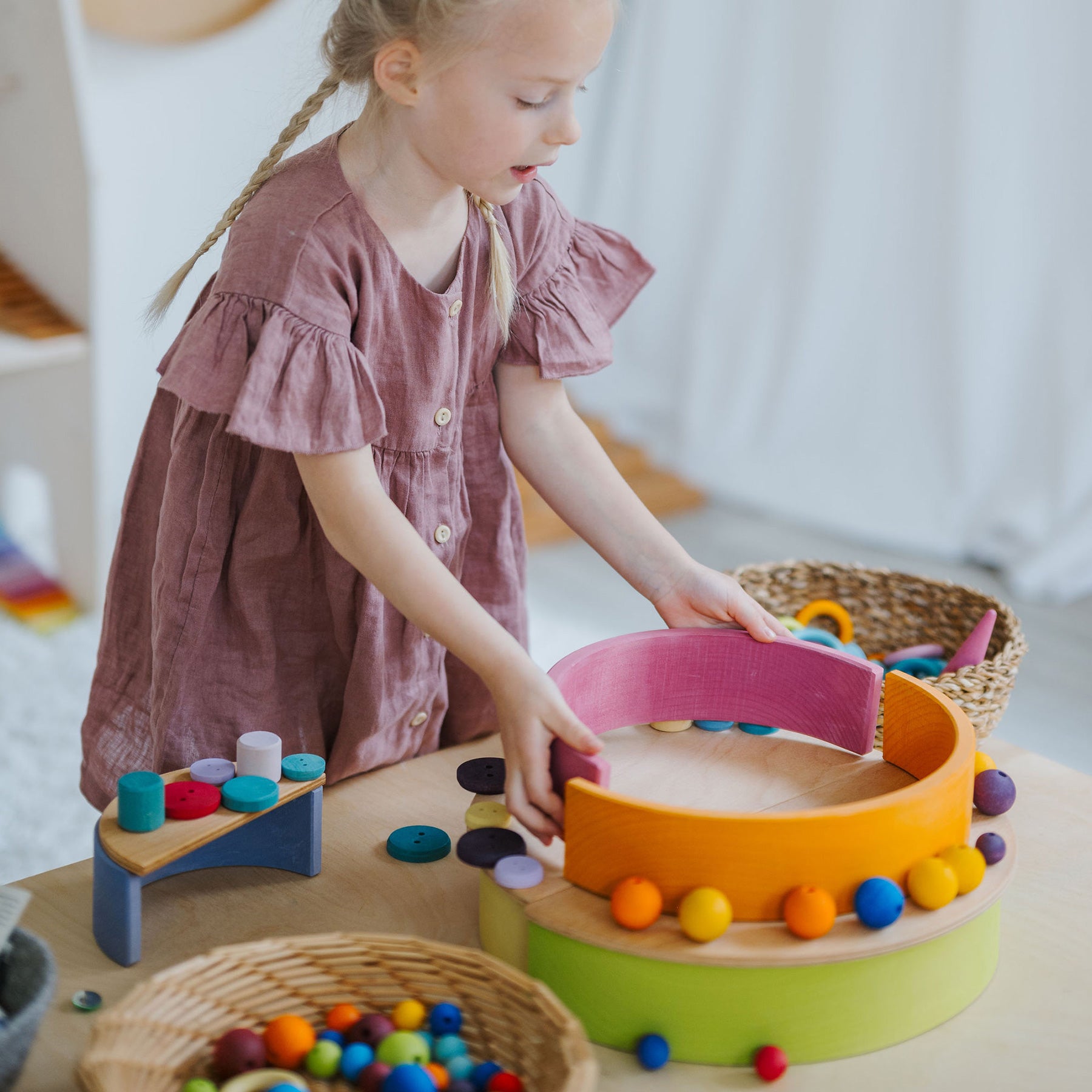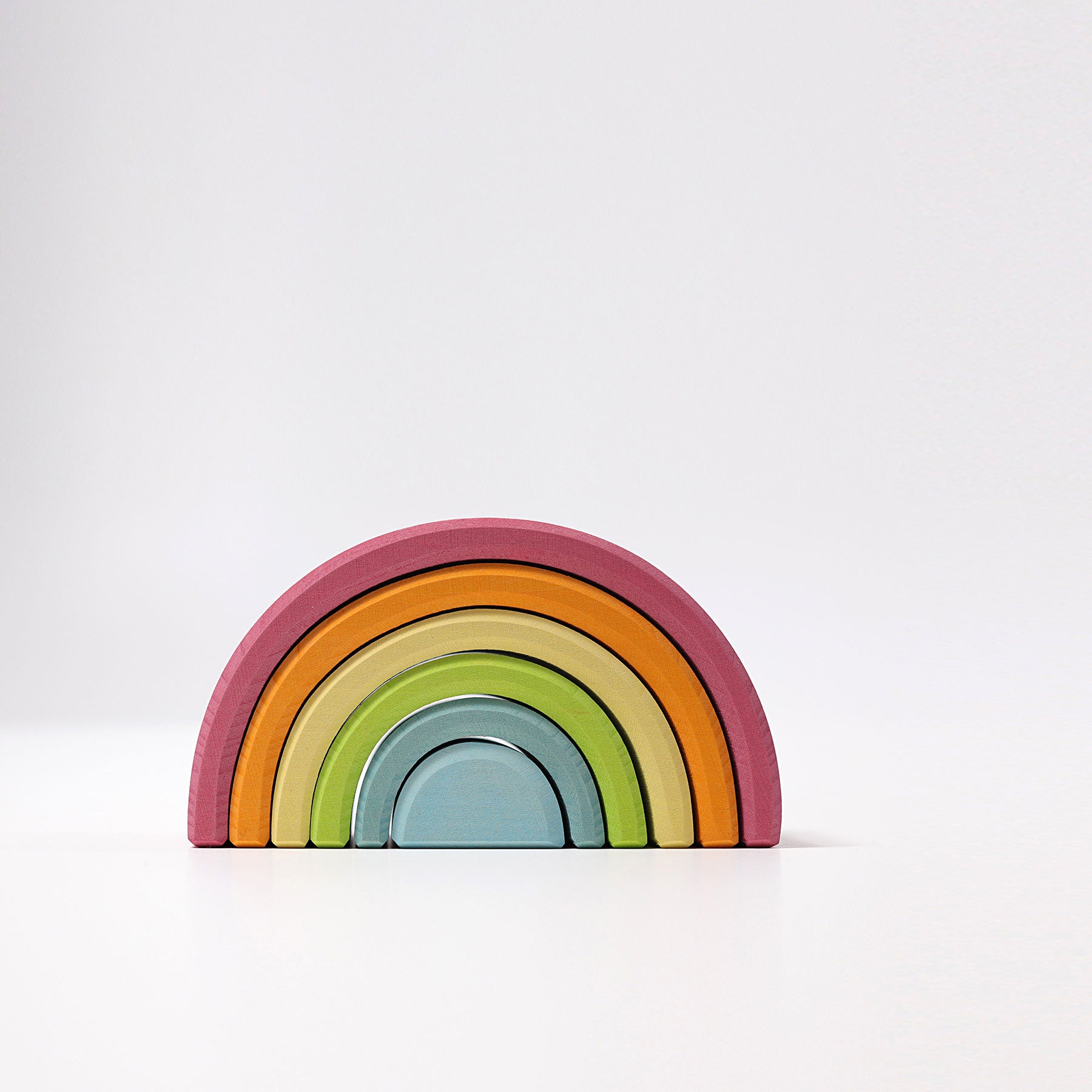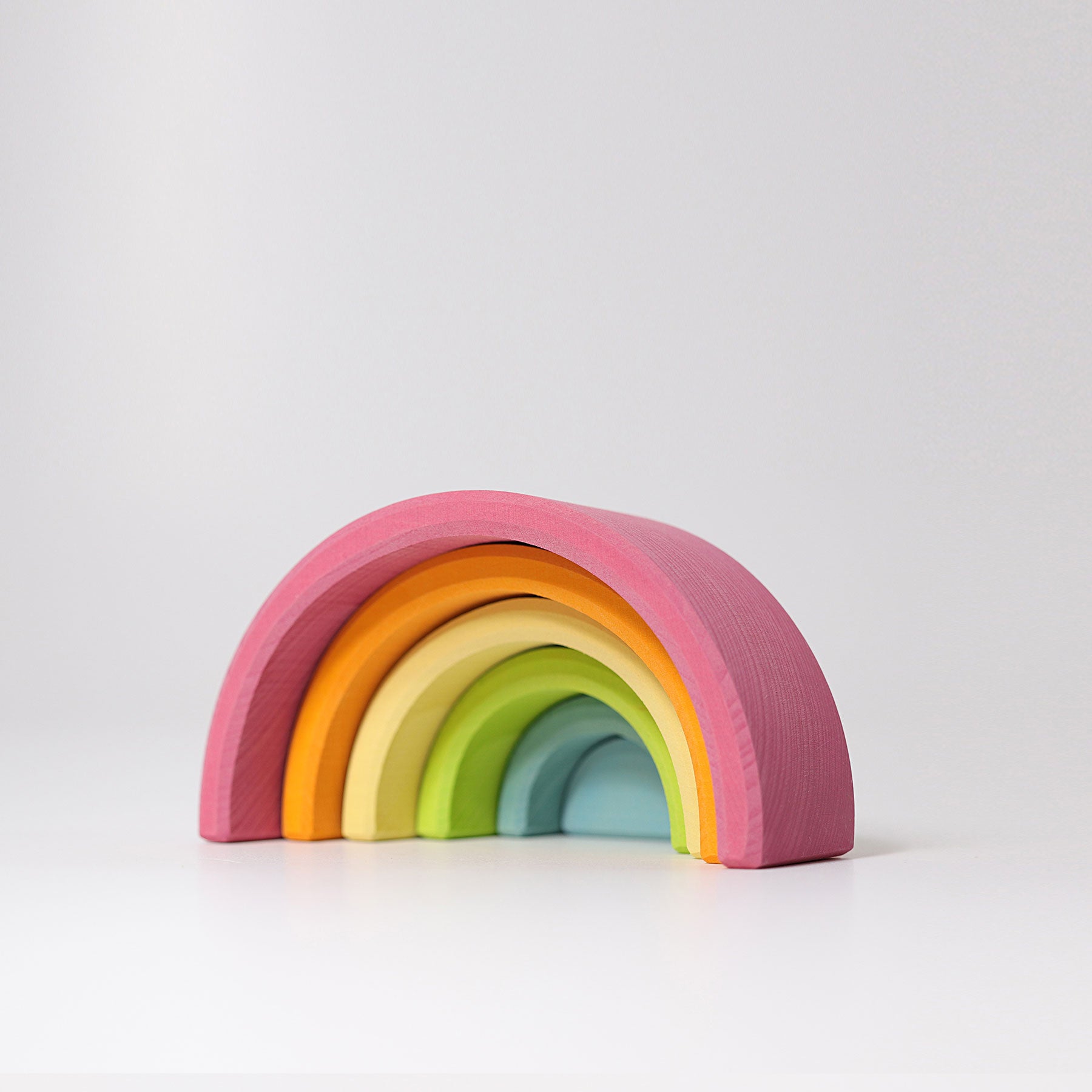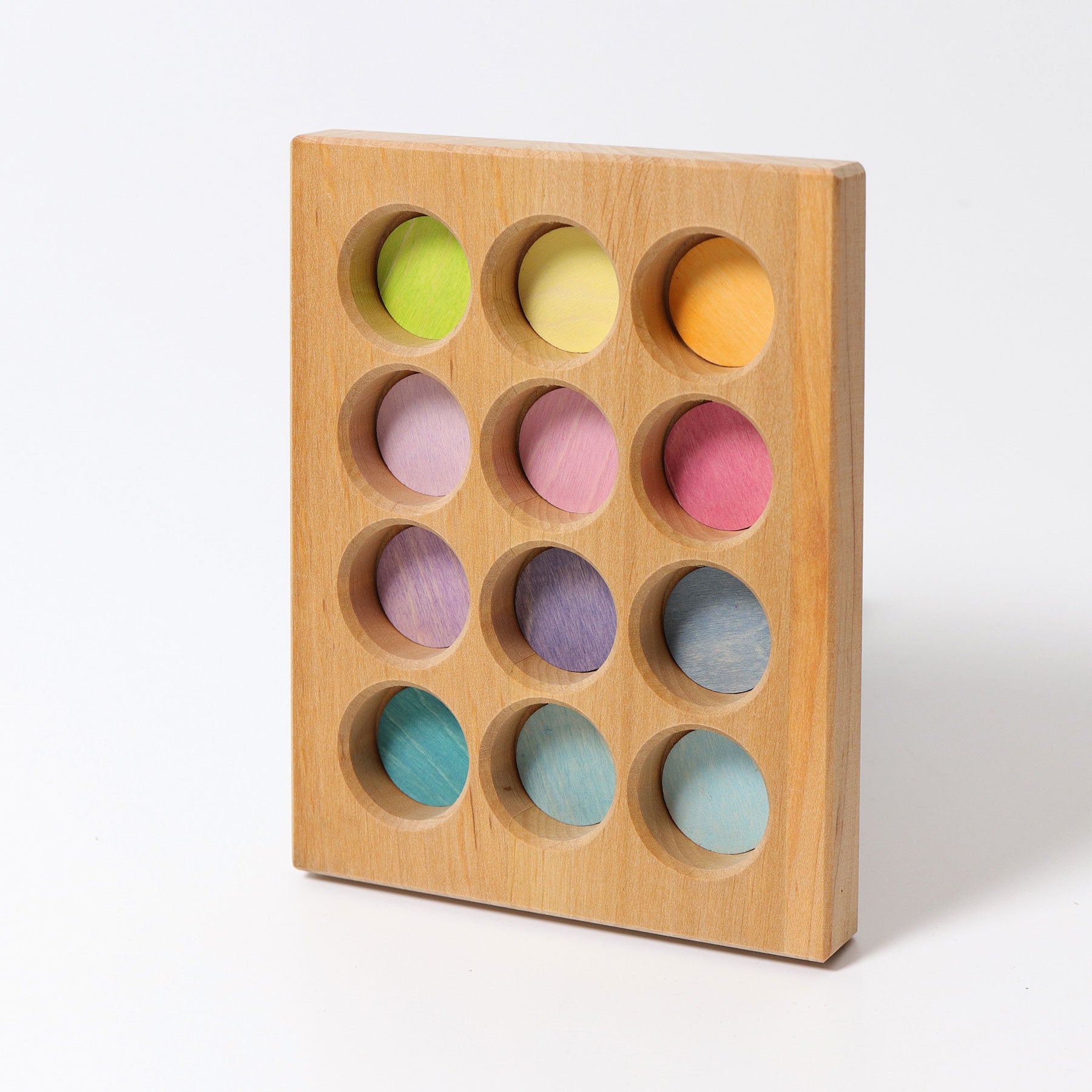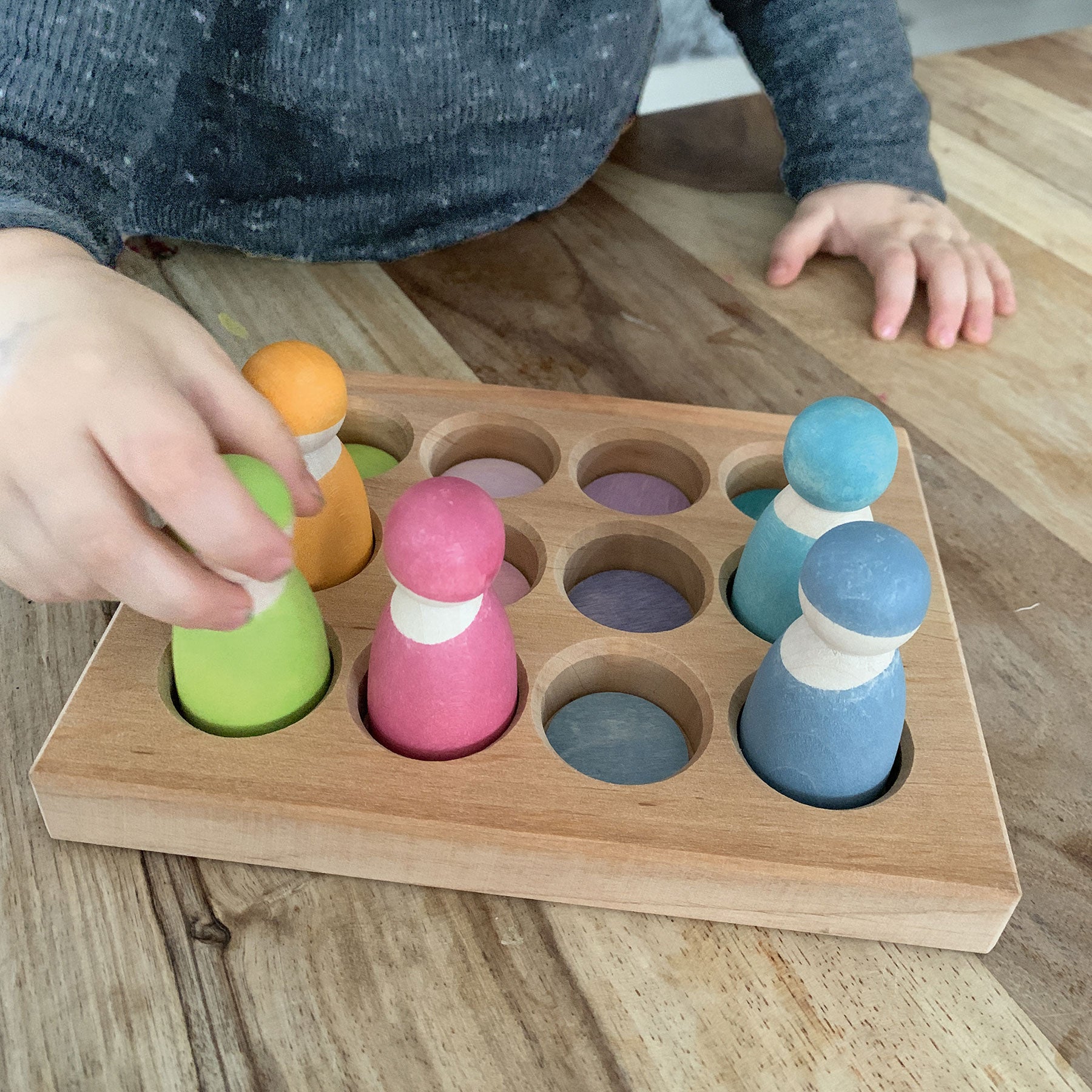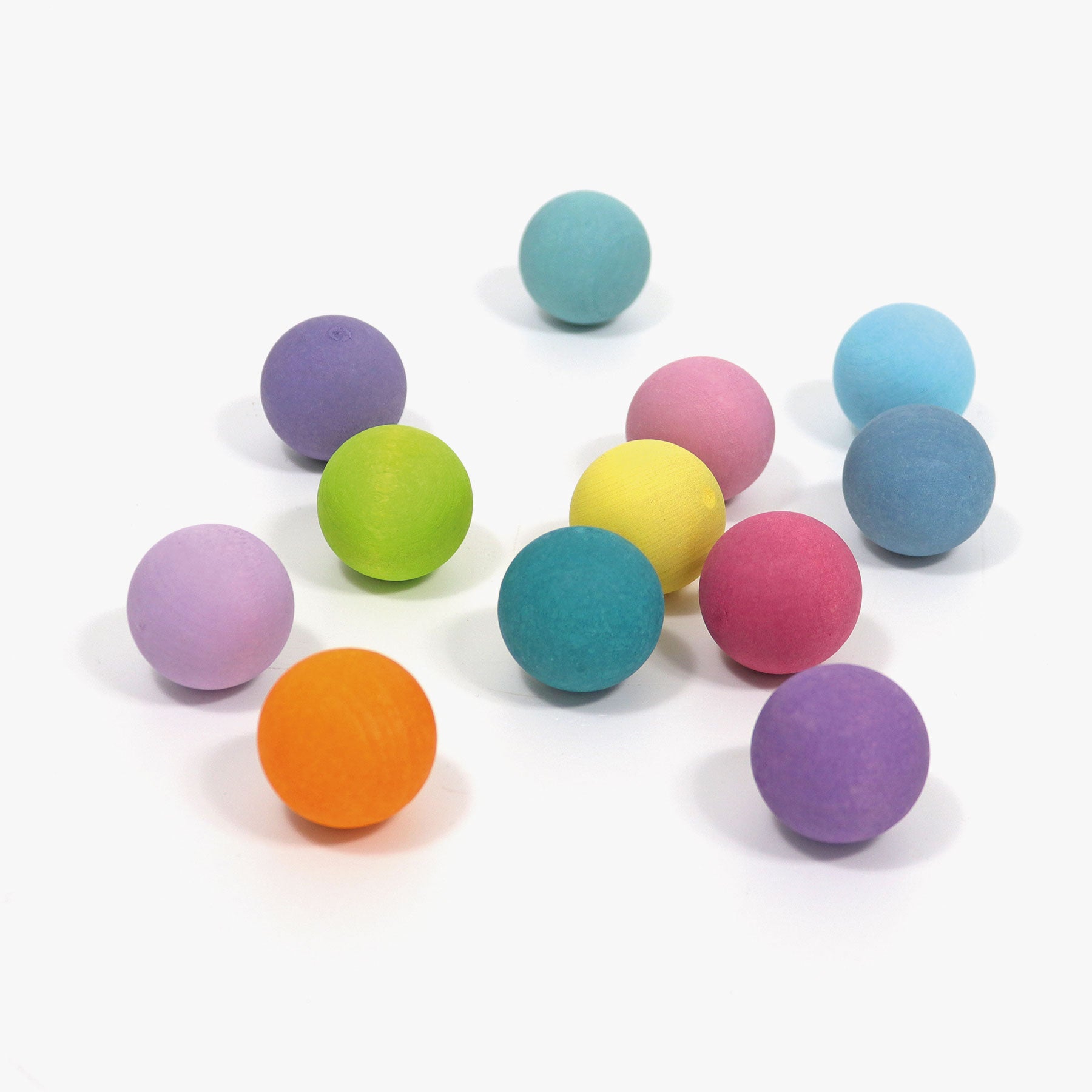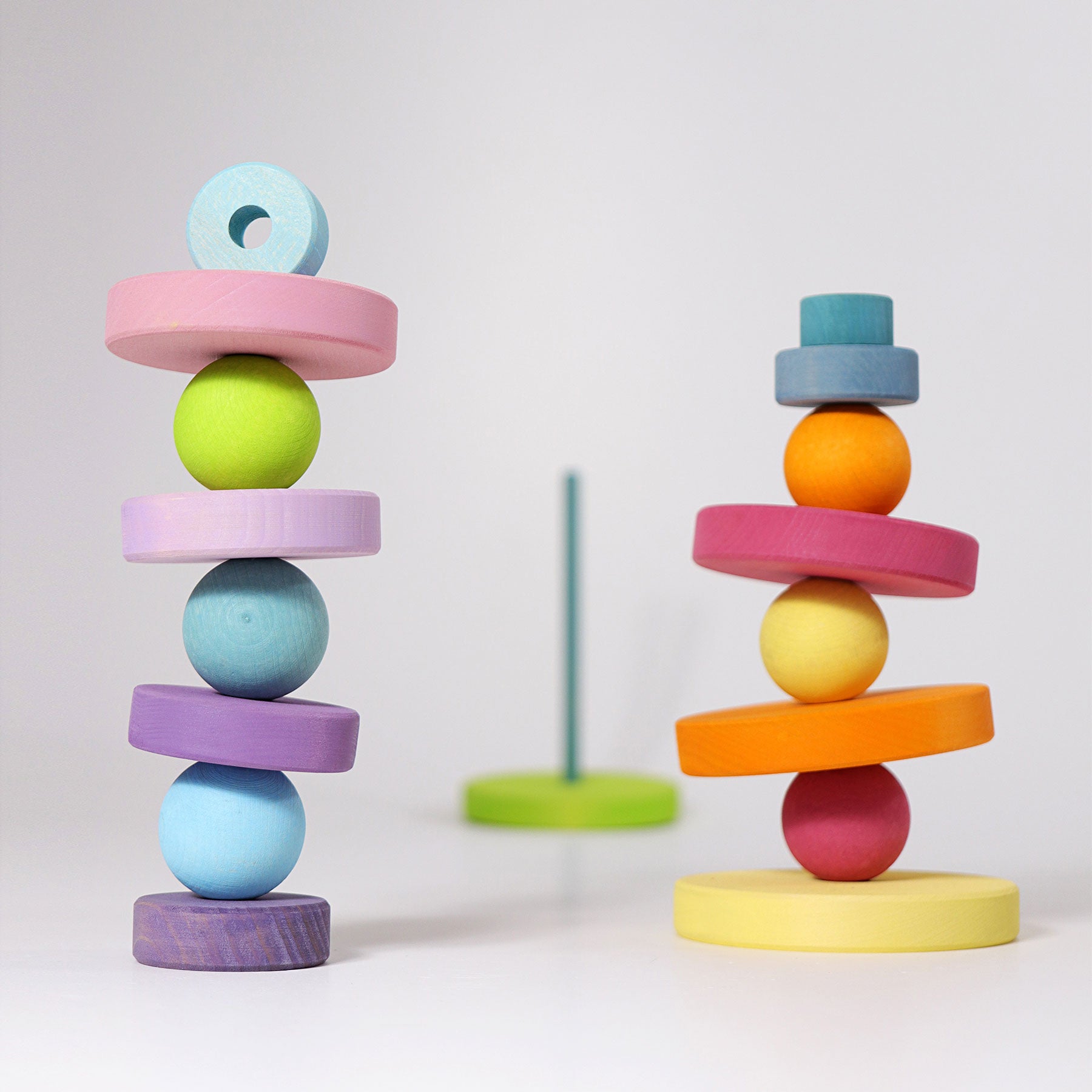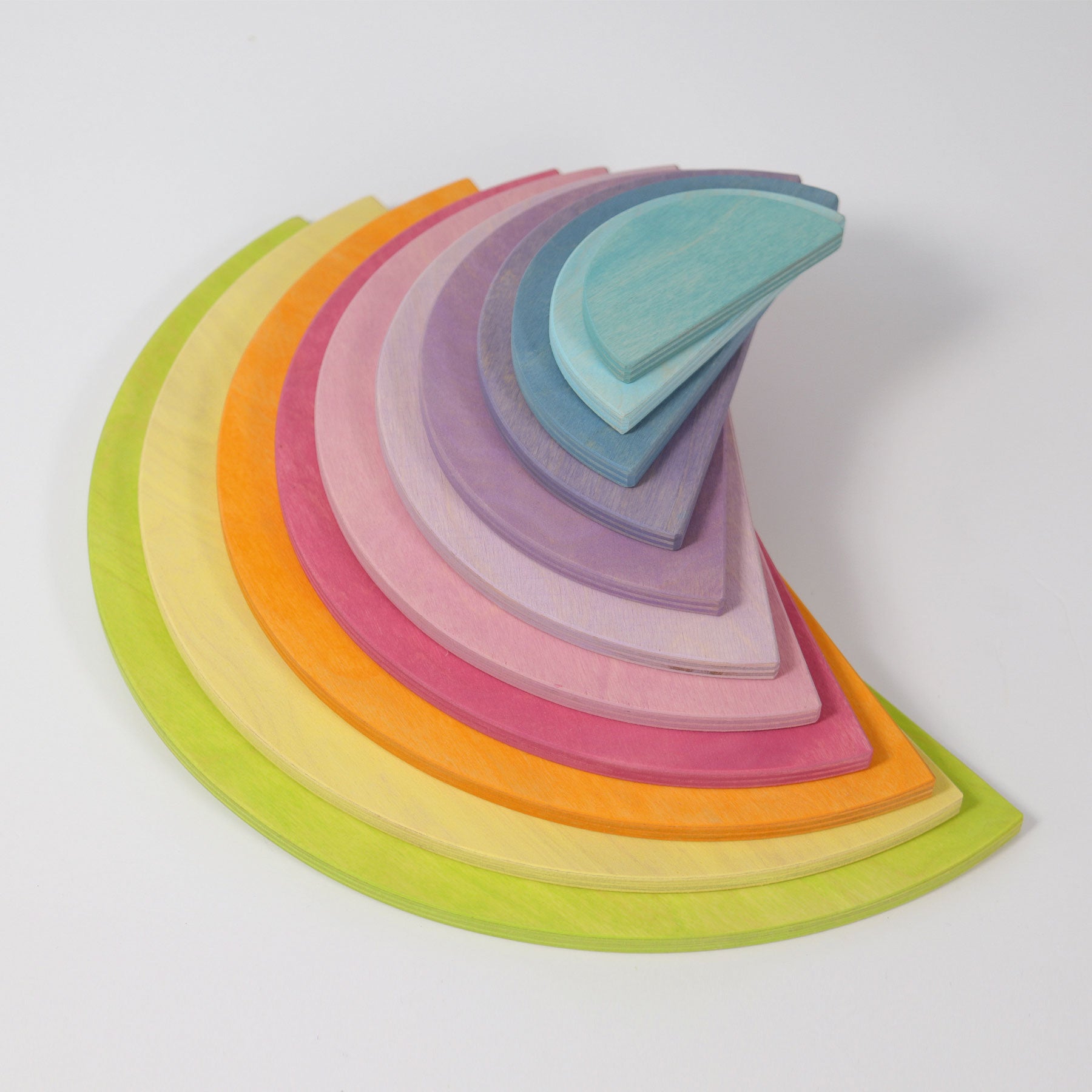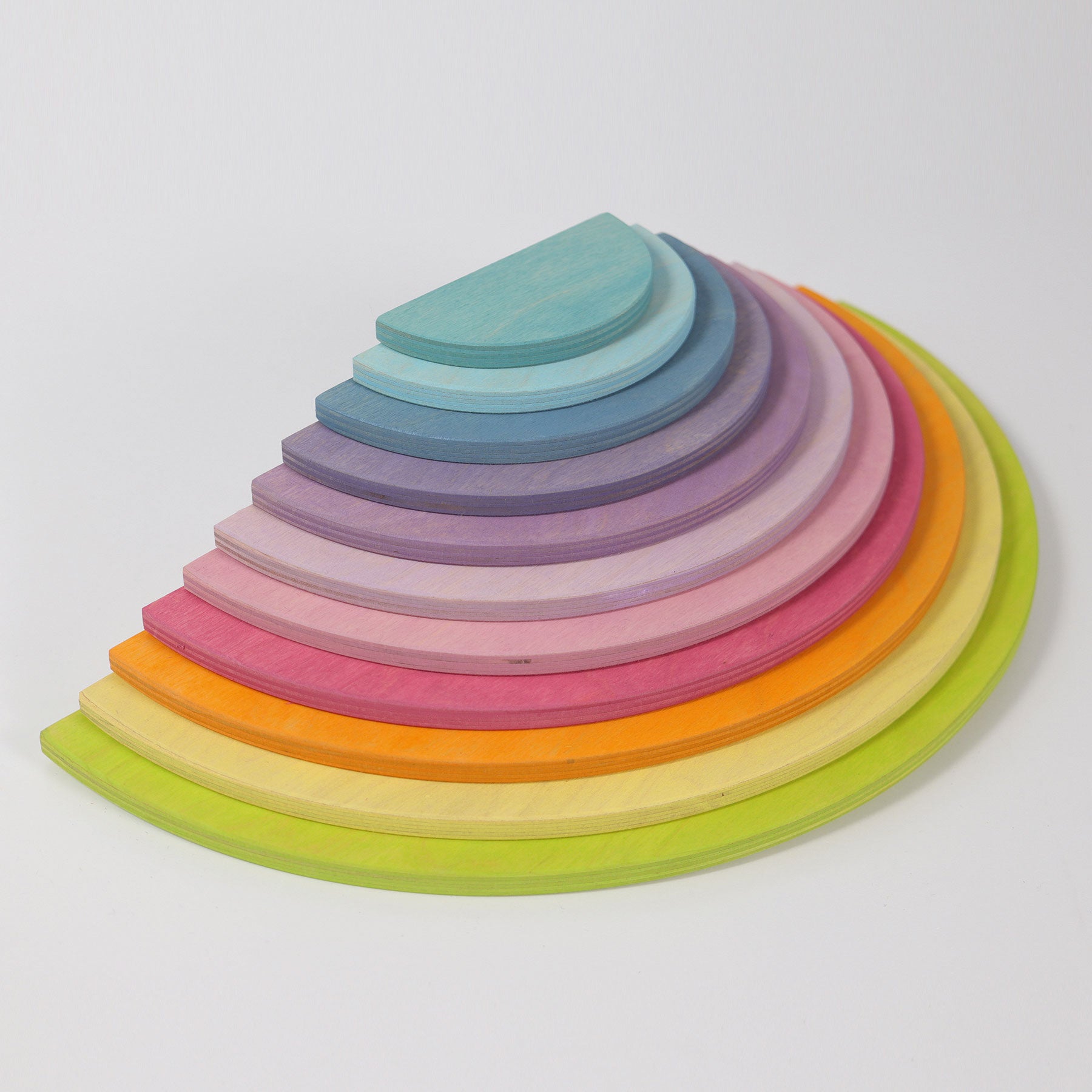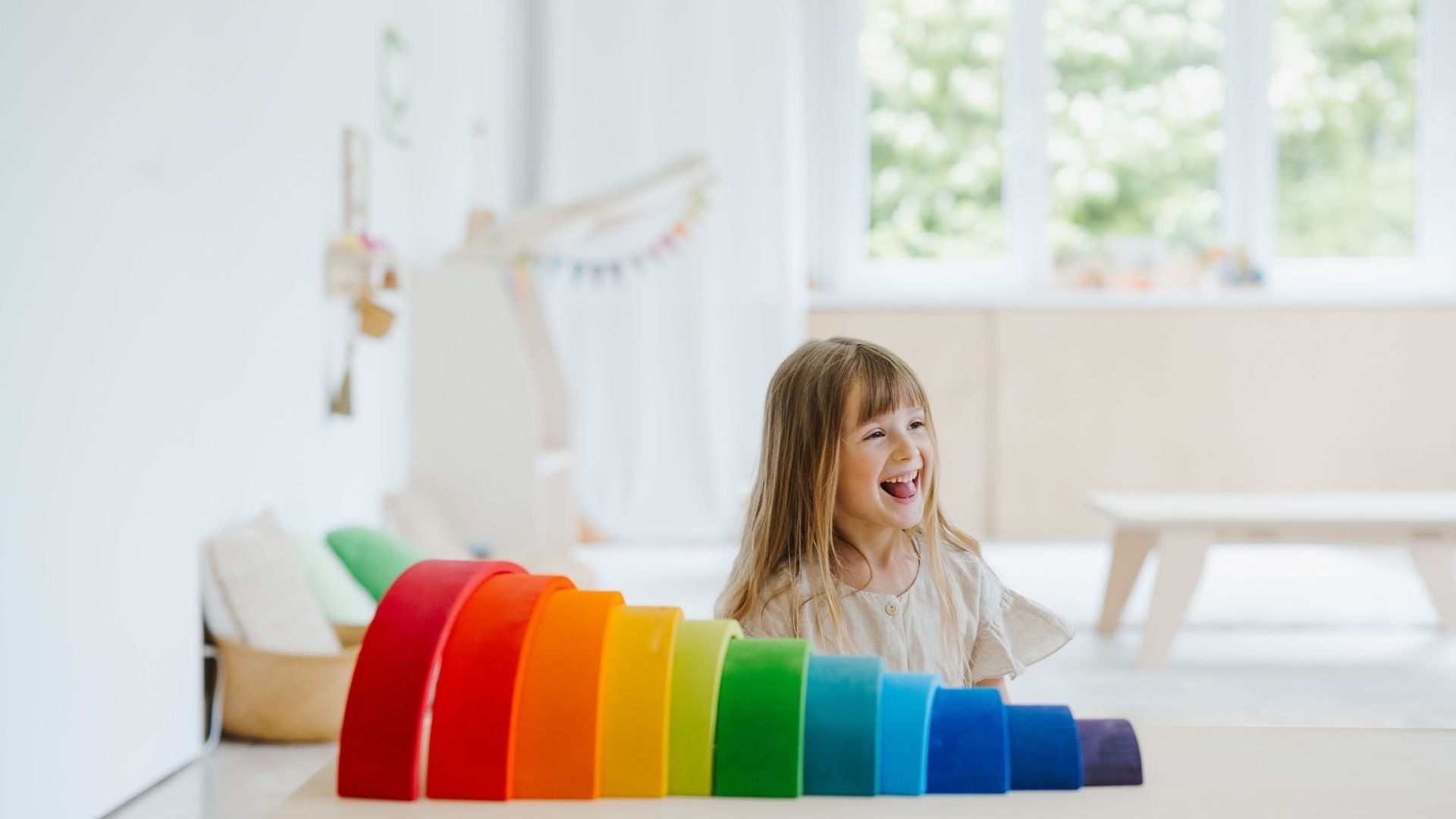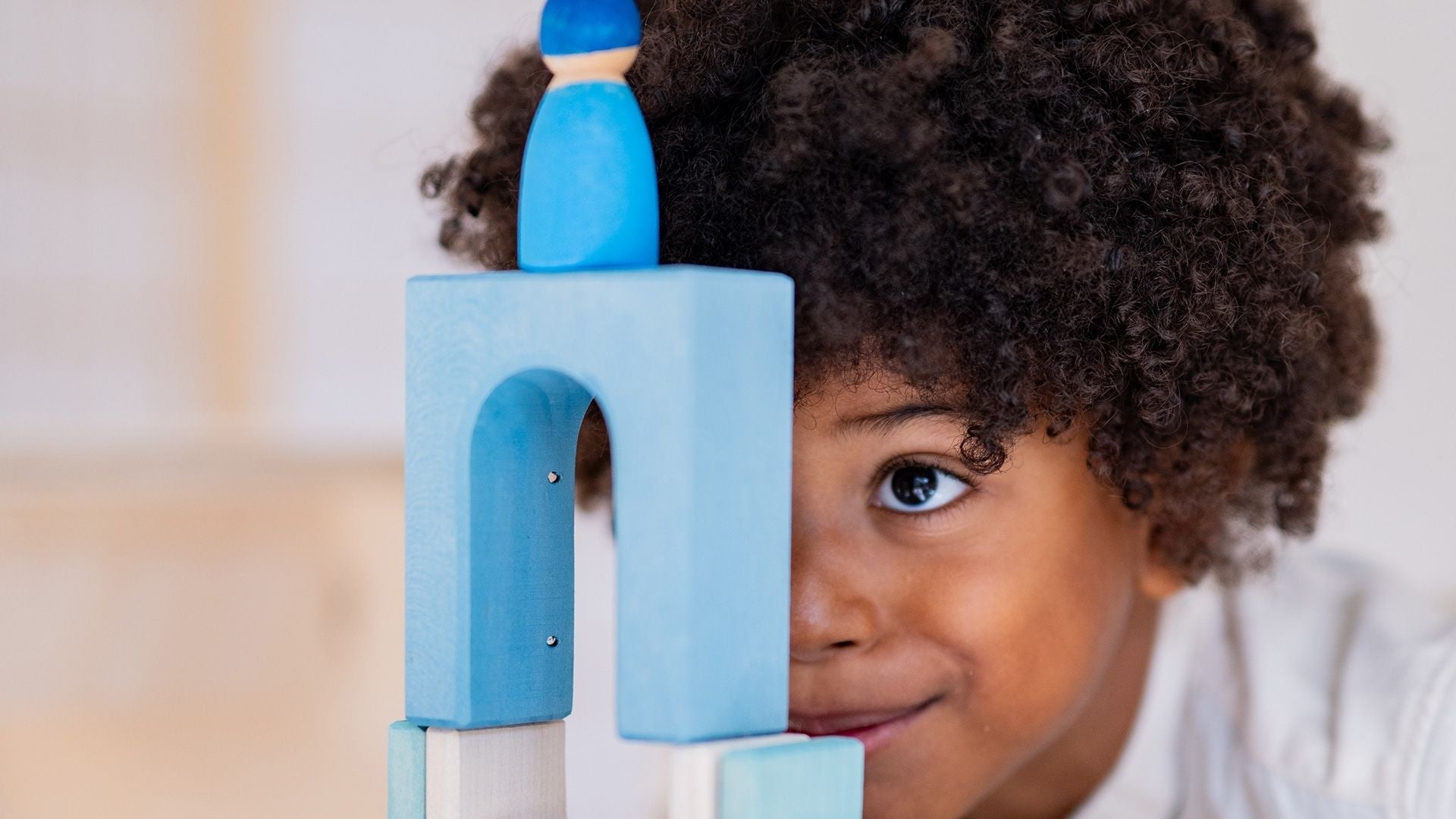A text by Windy (@childhoodelevated)
What I find so holistic about universal wooden play materials is that they appeal to people of all ages, and they simply have this innate appeal! They're alive and tactile and seem to whisper, "Take me with you," "Create something." But why did we stop listening to these whispers, and when did the relationship between adults and play become so distant?
Back to the sacred space of the game
Perhaps this is a result of the hectic pace of our daily lives, with jobs, errands, and never-ending "adult to-do lists." Our schedules become so packed that the gentle whisper of play is muffled by louder calls and eventually fades away. Then, when we have children, we are reminded again in such an emotional way of the pure beauty of play. We witness our children's beautiful moments and begin to take time to accompany them into the sacred space of play. It seems magical. Perhaps you even notice yourself enjoying play materials? I believe this is a healing moment for all adults when we recognize that play feels natural and healthy again, and we choose to make space for this experience.
Whenever you can take a moment, whether it's with your child or sometimes just a moment to yourself, do something for yourself. Connect with and nurture your inner child, who may not have received much attention in years. You may find that taking time to play after a hectic day makes you feel more grounded and helps you unwind from the pressures of adult life. Little by little, the creative process of play will unfold for you, and as an added bonus, you may find that your children are excited by your play!!!

A win on both levels: self-care and child-rearing
Whenever I've played with toys during the school day, I intentionally leave out what I've created, whether it's a ball run, a castle, a mandala, etc. This is different from an intentional invitation to play, where you create a play scenario that's precisely tailored to the child's developmental needs and often has specific educational goals. I've started to call this a "passive invitation to play." It's something I create purely for my own play enjoyment and then leave out to see what the kids think! Often, the kids will start playing with it right away and then develop the original concept into their own improved version! I would call this a win on both levels of self-care and parenting! When we naturally move in a congruent way with our children, really beautiful things begin to happen.
Play à la Montessori
I vividly remember, when I completed my Montessori training many years ago, that the training relied heavily on our own hands-on experiences with the materials. We had to touch and interact with every material in the children's environment, understanding its potential in an intimate way. I didn't realize it at the time, but they helped us develop our own loving relationship with the play materials. And this is such an ingenious aspect of the Montessori process because, after all, young children are absorbent sponges, and they immediately notice how connected we are to the environment and materials we provide. Are we fascinated and excited ourselves, or are we preoccupied with other tasks and detached from the play process? Are we prioritizing our own play and creative process over the children? Are we sharing our own satisfaction at a successful play cycle? All of this will eventually be reflected in their play and development.
Knowing this, I strove to create play spaces wherever we lived that were warm and appealing to both the children and the adults in the house. I needed to feel that I, too, was connected to that space and that I found the toys attractive and inviting. And so, little by little, our collection of wooden toys for free play began. Over time, I not only enjoyed setting up the environment for the children, but I also enjoyed playing with them myself. And the more I allowed myself to become familiar with these toys, the more my children wanted to play and create for themselves. These days, it's rare that I intentionally encourage my children to play, as they usually initiate their own, self-directed play.

The value of the game
"Play is the child's work" is a quote by Maria Montessori that many are familiar with. Following Montessori's principles, we define play as work because we see that a child's efforts to learn through play are far from wasted. Every moment of play is understood as purposeful and meaningful, and so we can recognize play as something just as important as work. However, in adult culture, we have (as mentioned earlier) somehow distanced ourselves from the innate value of play. Here, our children actually have the amazing potential to, in a way, rescue us from our own seriousness and busyness. They remind us daily that play is indeed a very serious matter and should not be skipped!
I encourage you to think about what kind of play nourishes you and what you enjoy playing with? Do you feel connected to the play materials and space in your home, or do you have a desire to change the situation to have a stronger relationship with it? Take it day by day and remember that play is definitely "not just for kids"!
